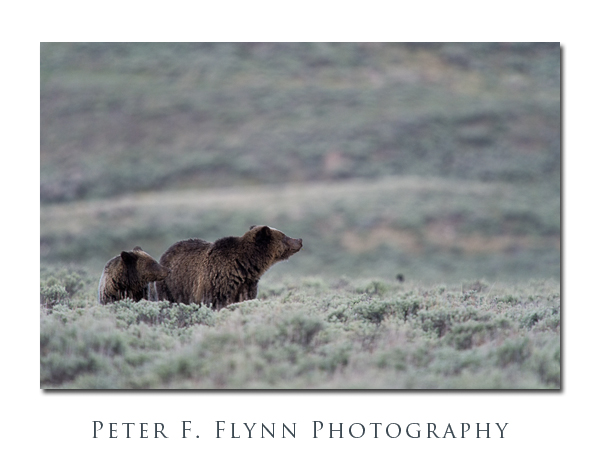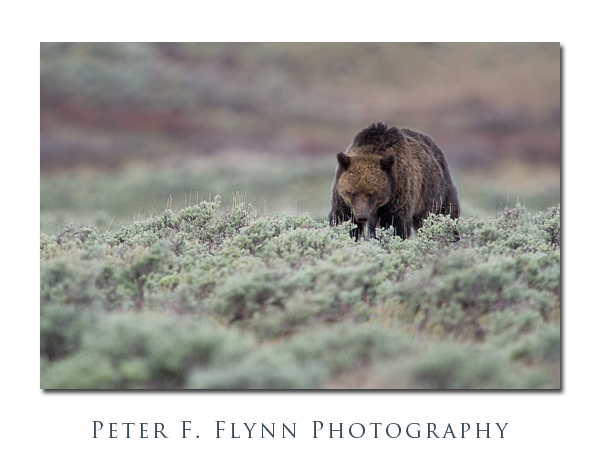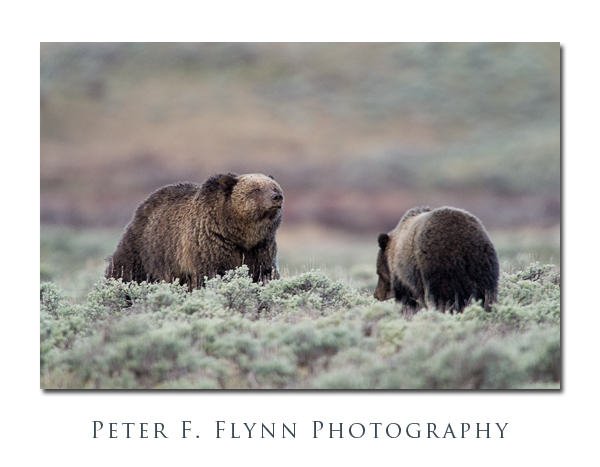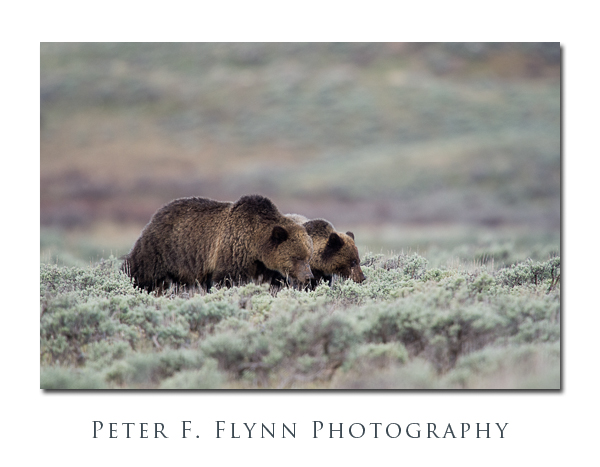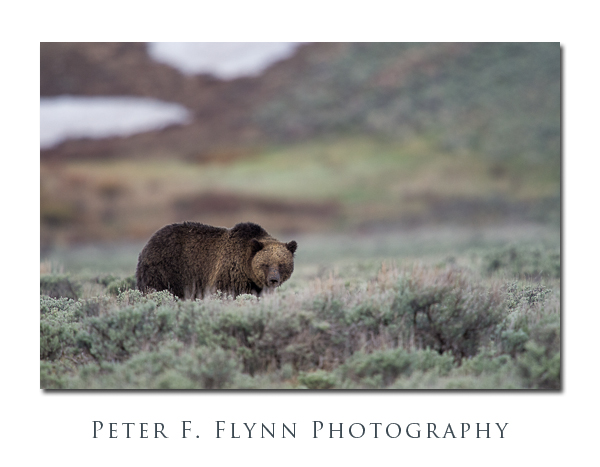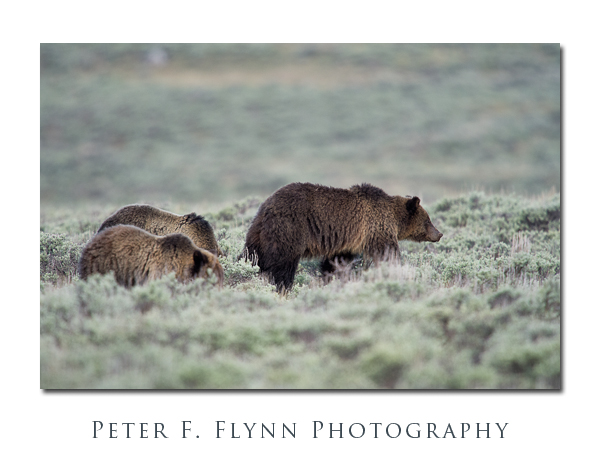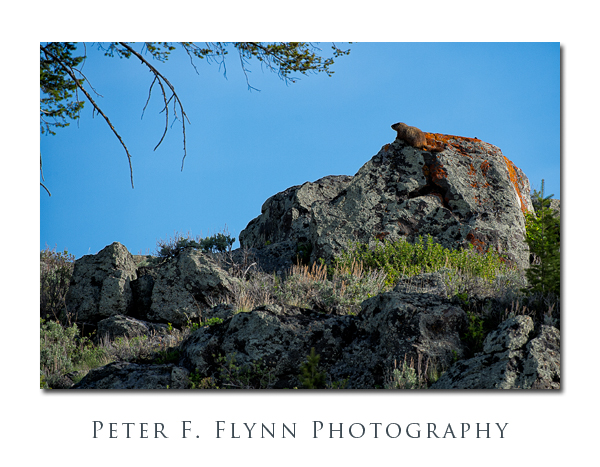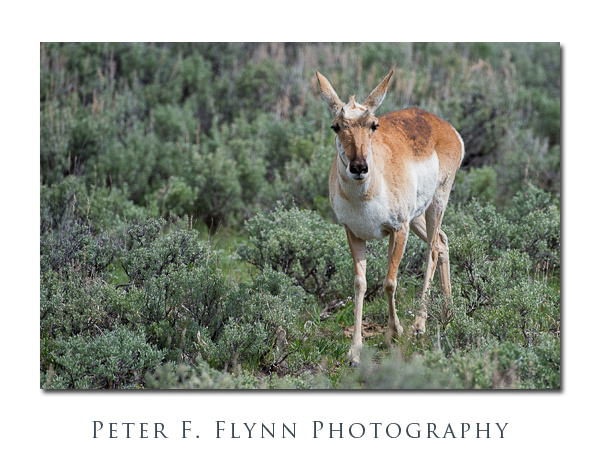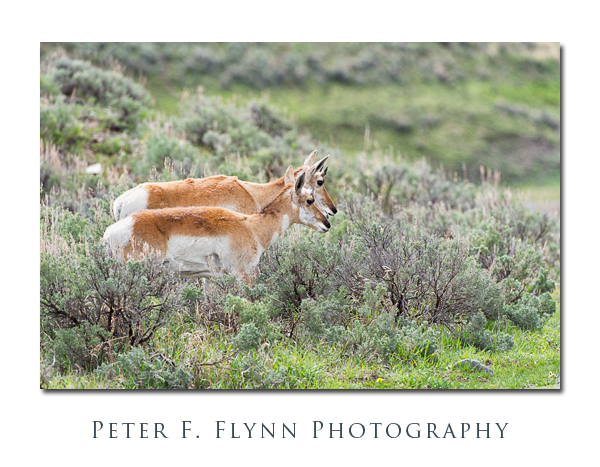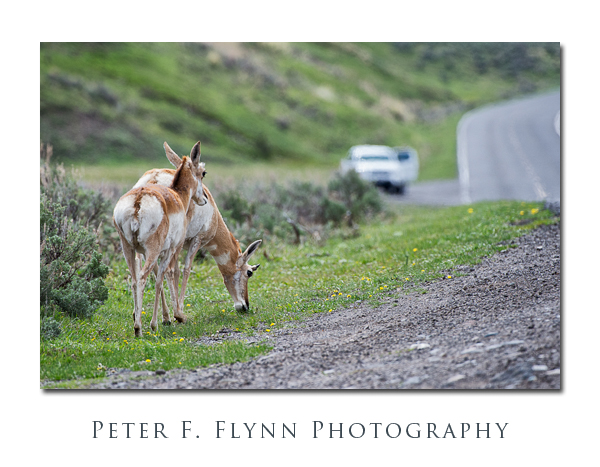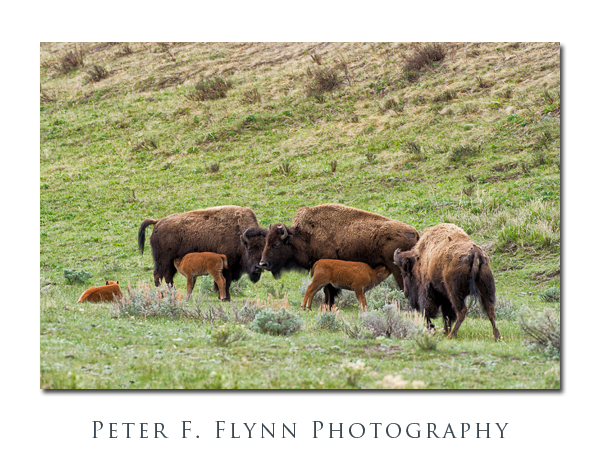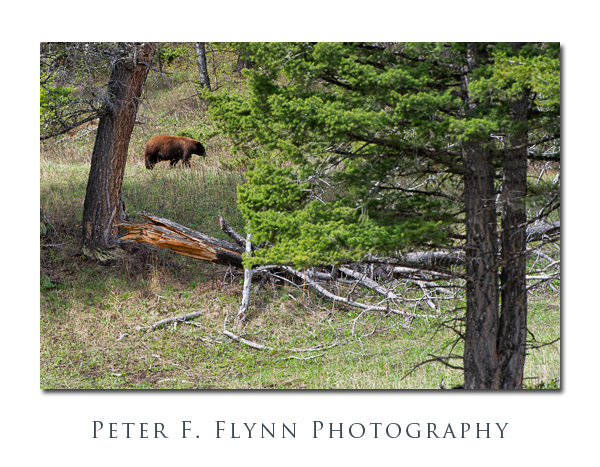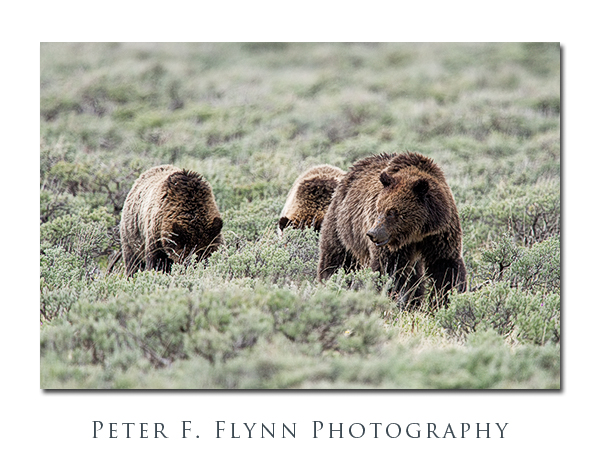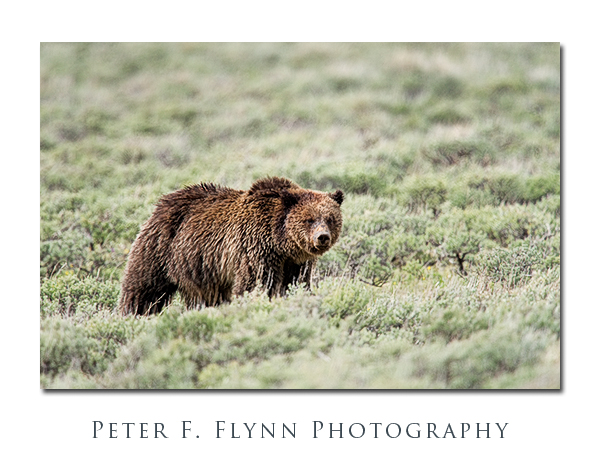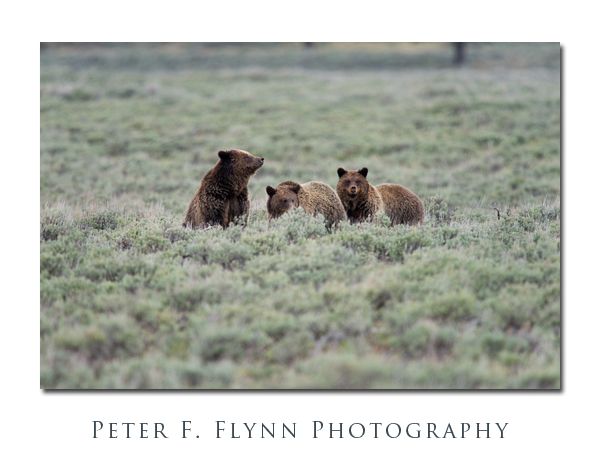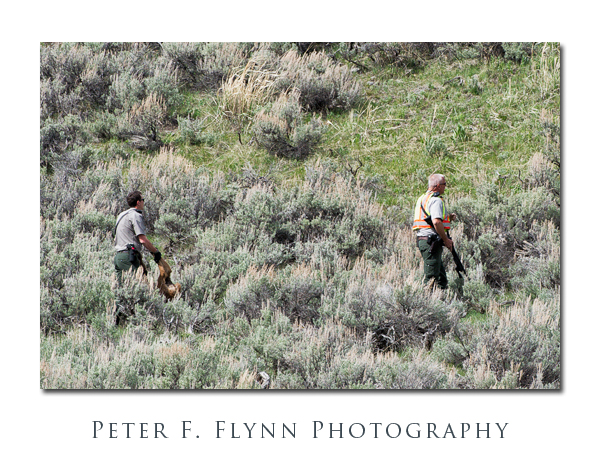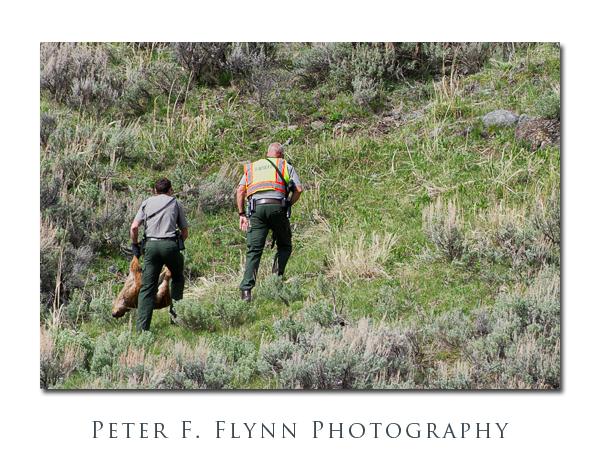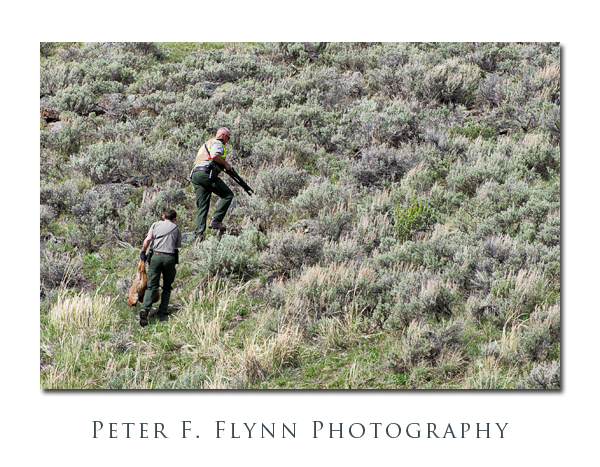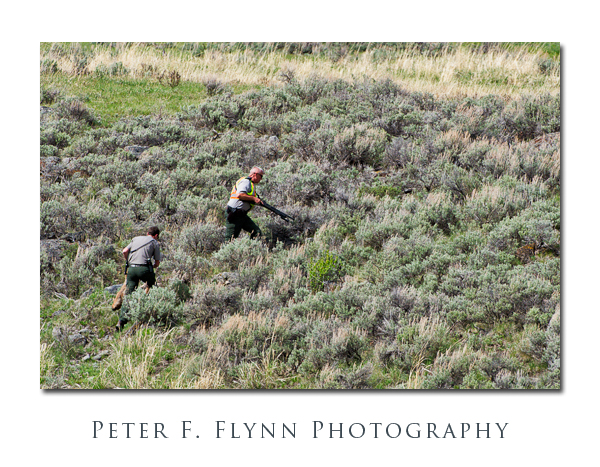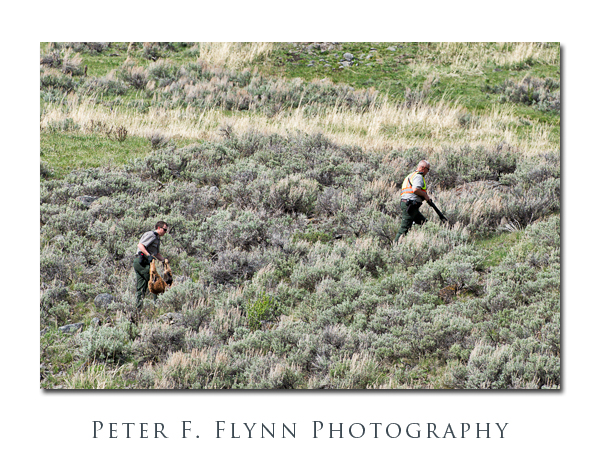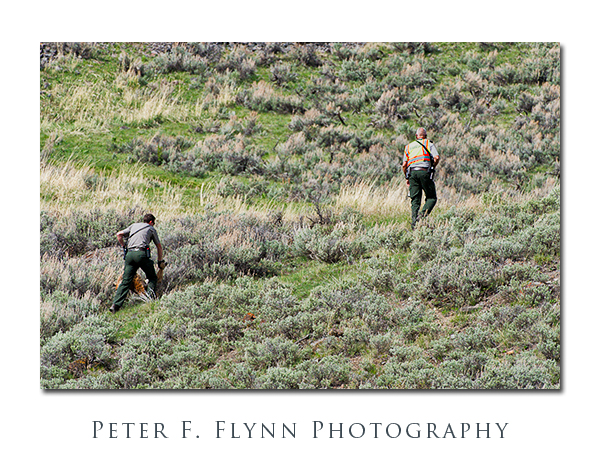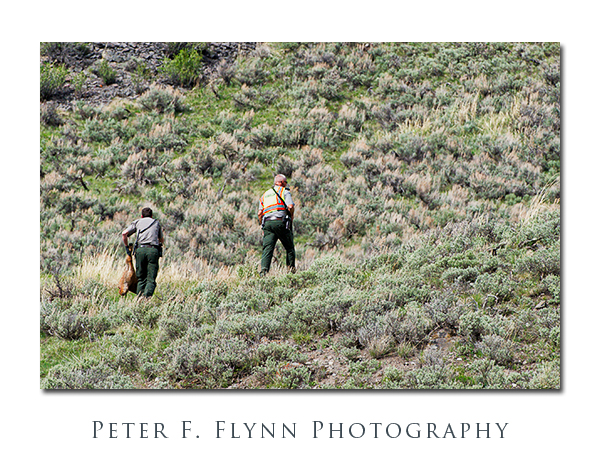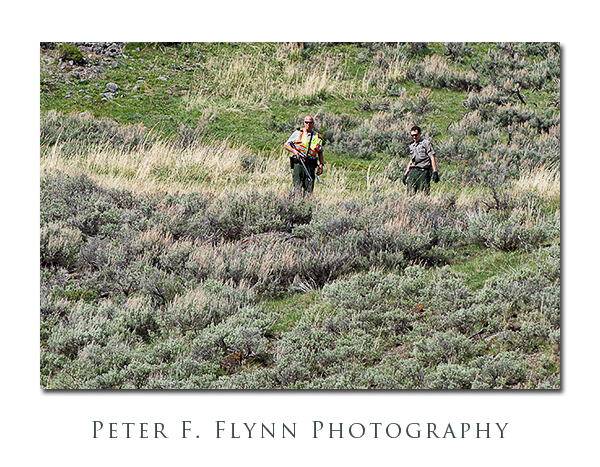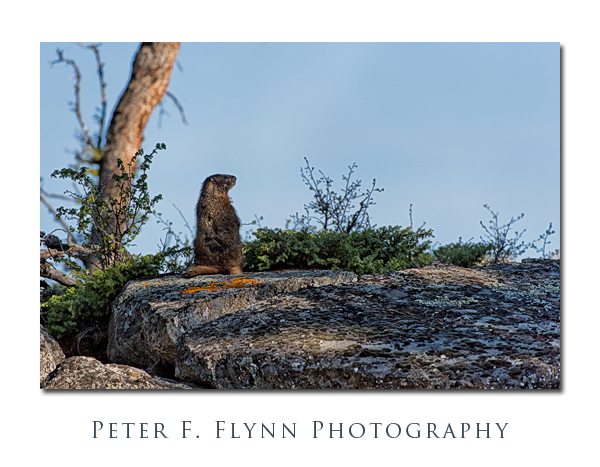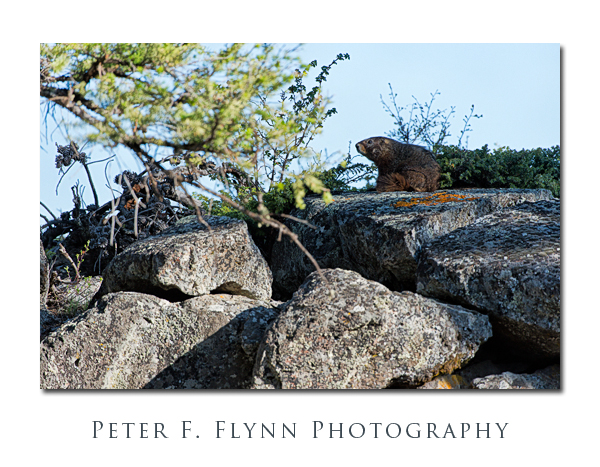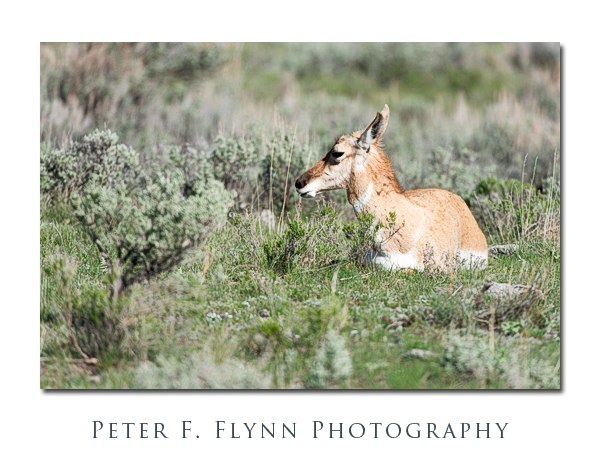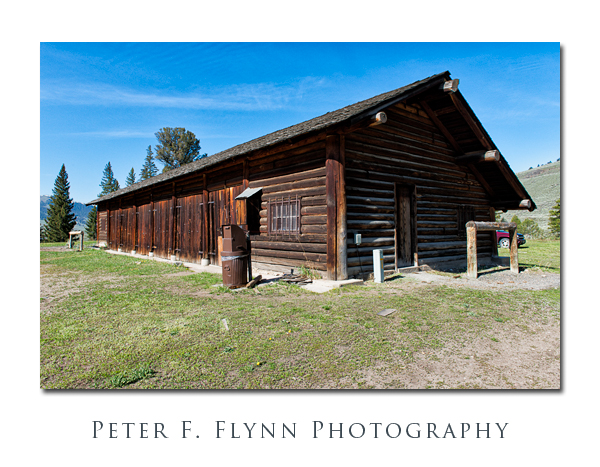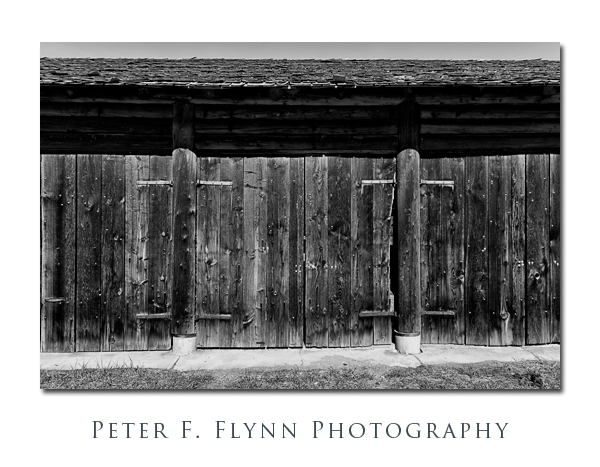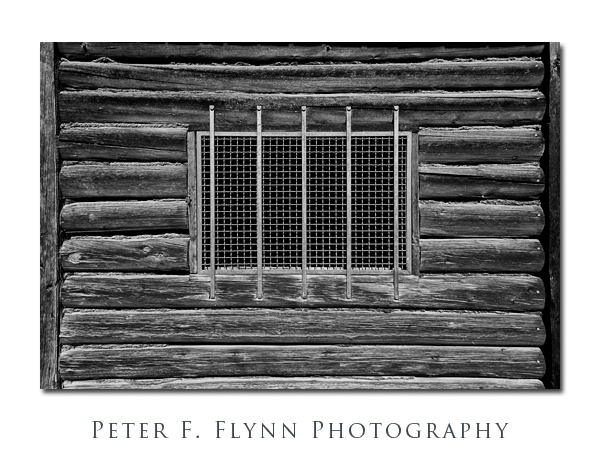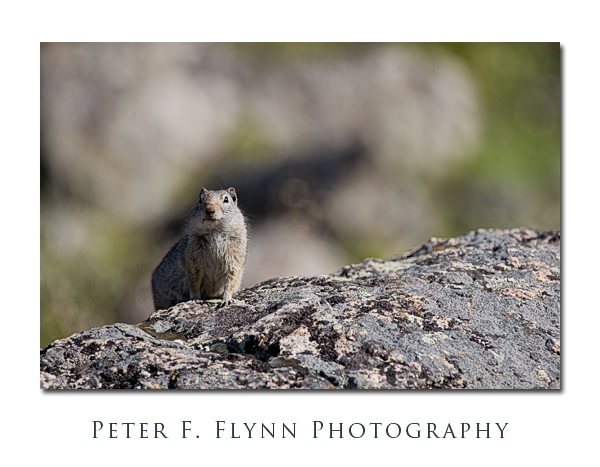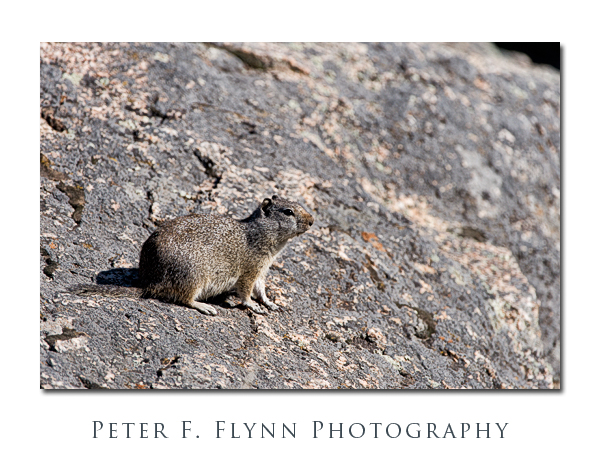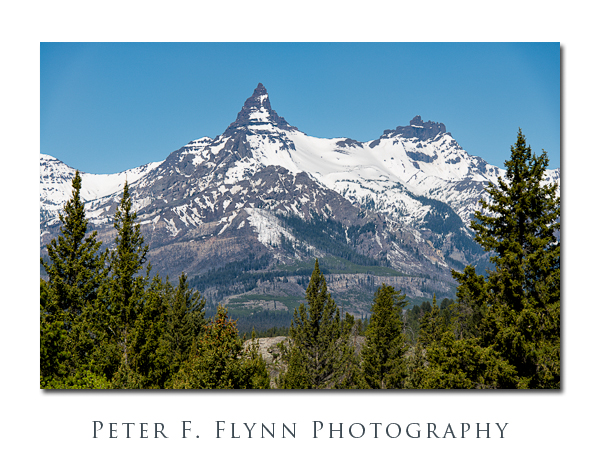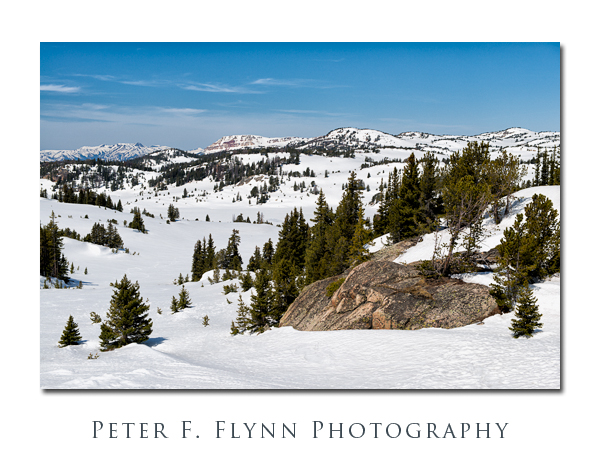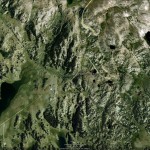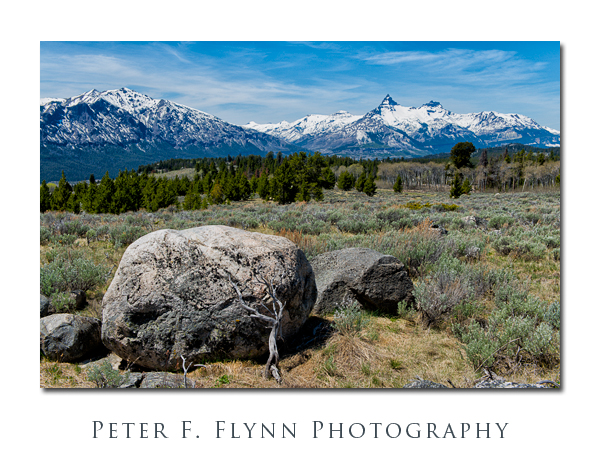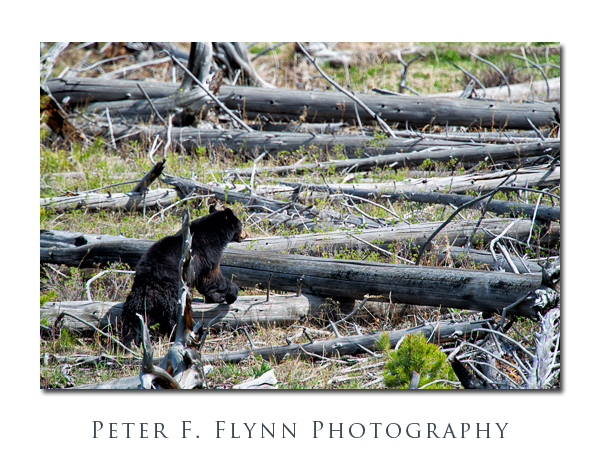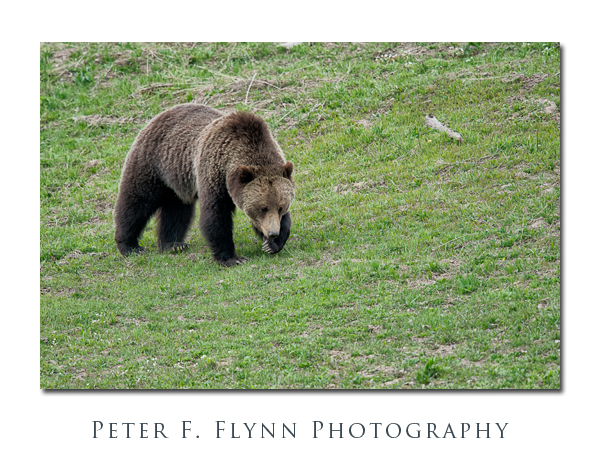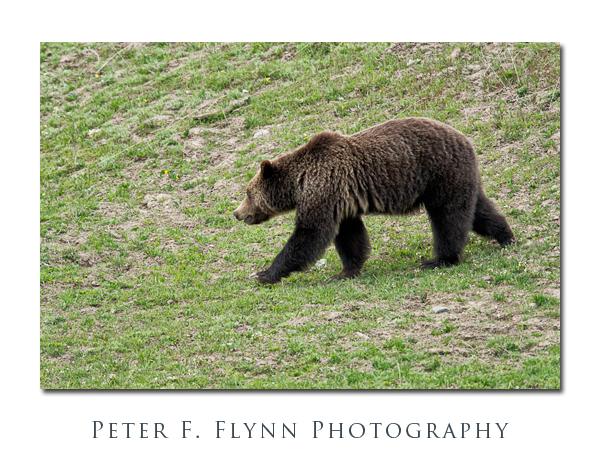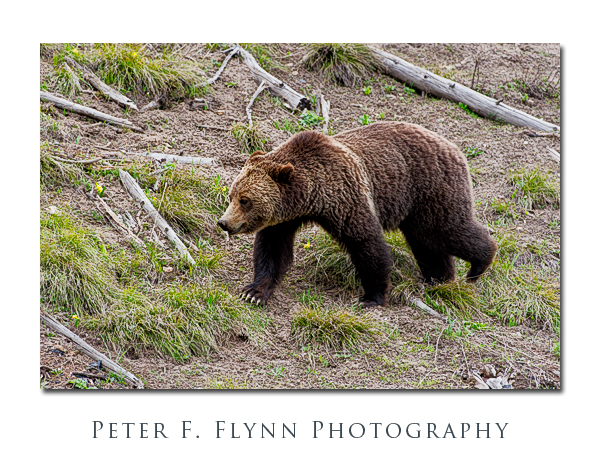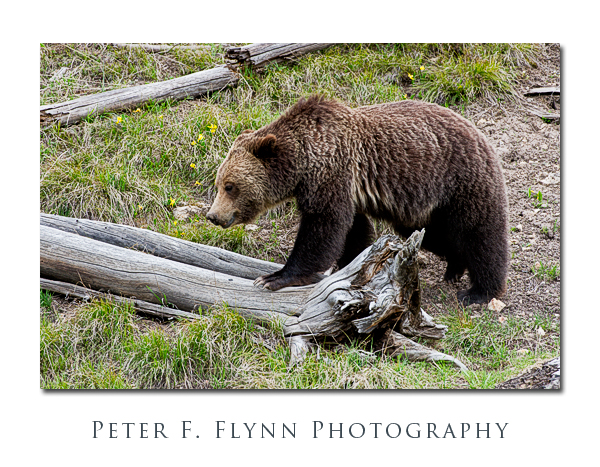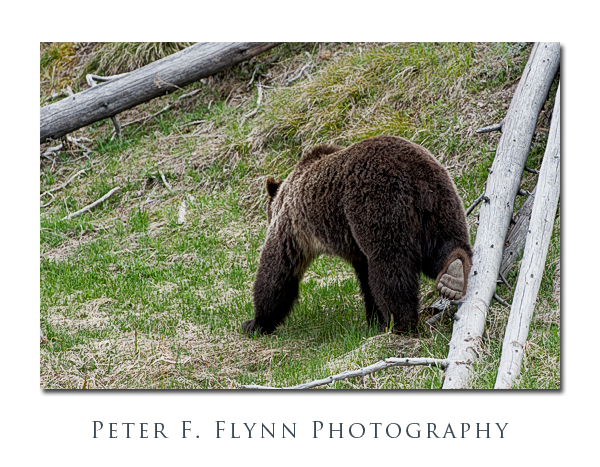Yes, it has been a while since I’ve had the chance to catch up on things. Rest assured that I have not been neglecting my photo interests, but we’ve been out in the field a bit this spring and summer, and I’ve just not had the time to sort out a post, well, until now.
The images of the resident Swan Lake Flat sow grizzly and her two cubs are shown above and below (five images). Images recorded at 07:40 MDT on May 17, 2012 using the Nikon D4 and the AF-S NIKKOR 600mm f/4G ED VR with the AF-S Teleconverter TC-14E II (1000mm). Exposure was f/6.7 and 1/800s, ISO 2500 (+0.67 EV, adjusted in ACR).
Although Yellow-Bellied Marmots are common in the park, many visitors never see them. One reliable location for spotting these critters is along the Northeast Entrance road at the junction of Blacktail Plateau Drive. There is an exposed basalt formation nearby that is a favorite environment of the YNP marmots. Early morning is the most likely time to view marmots here. The image below was recorded at 08:35 MDT using the D4 and the AF-S NIKKOR 200-400mm f/4G ED VR II at 400mm. Exposure was f/5.6 and 1/800, ISO 400 (+0.67 EV, adjusted using ACR).
Pronghorn are common along the Northeast Entrance Road near the area that lies below Specimen Ridge, where the landscape flatten out along Slough Creek (following three images). We have sometimes seen newborn animals along this section as well as small bands of adults. Images recorded at 10:15 MDT, using the D4 and 200-400mm f/4G ED VR II at 400mm. Exposure was f/5.6 and 1/1600, ISO 400 (+0.33 EV, adjusted using ACR).
One of the major attractions in the YNP during spring is the presence of newborn Bison calves. The distinctive coloration and boisterous behavior of these youngsters is impossible to resist. One could easily spend an entire day watching them. The image below was recorded at 10:30 MDT at the same location that we shot the Pronghorns above, using the D4 and the 200-400mm f/4G ED VR II at 400mm. Exposure was f/8.0 and 1/640, ISO 1000 (+0.33 EV, adjusted using ACR).
The coat of black bears display a remarkable range of hues, from jet to light cinnamon. The lack of a shoulder hump is a clear indication that this is not Griz. The image below was recorded along the Northeast Entrance Road at 10:55 MDT, using the D4 and the 200-400mm f/4G ED VR II at 400mm. Exposure was f/8.0 and 1/800, ISO 1600 (+0.33 EV, adjusted using ACR).
We encountered a very bold coyote near the Mud Volcano area. This coyote strutted about the parking area like it owned the place. The image below was recorded at 13:25 MDT, using the D4 and the 200-400mm f/4G ED VR II at 400mm. Exposure was f/8.0 and 1/3200, ISO 1600 (+0.33 EV, adjusted using ACR).
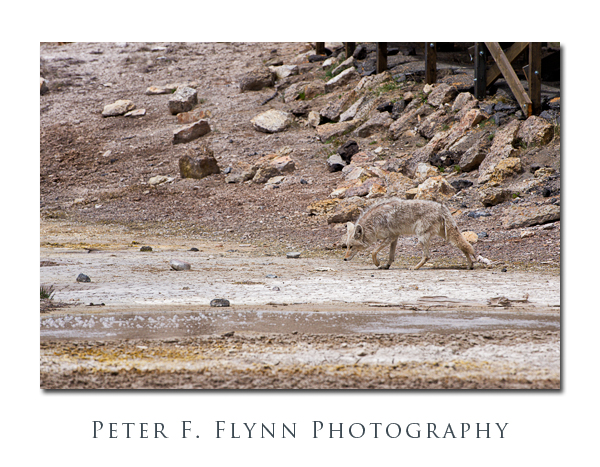 Near the end of the afternoon we revisited Swan Lake Flat, and found the sow Griz and her two cubs still on patrol. Similar setup as in the AM session, but this time shooting the Nikon D800. Exposures were at f/6.7 and 1/1250s, ISO 1600 (+0.67 EV). Images from the D800 at ISO 1600 contain much more noise than do either the D3 or the D4, but is entirely manageable (I used Nik Dfine on these images).
Near the end of the afternoon we revisited Swan Lake Flat, and found the sow Griz and her two cubs still on patrol. Similar setup as in the AM session, but this time shooting the Nikon D800. Exposures were at f/6.7 and 1/1250s, ISO 1600 (+0.67 EV). Images from the D800 at ISO 1600 contain much more noise than do either the D3 or the D4, but is entirely manageable (I used Nik Dfine on these images).
Copyright 2012 Peter F. Flynn. No usage permitted without prior written consent. All rights reserved.
